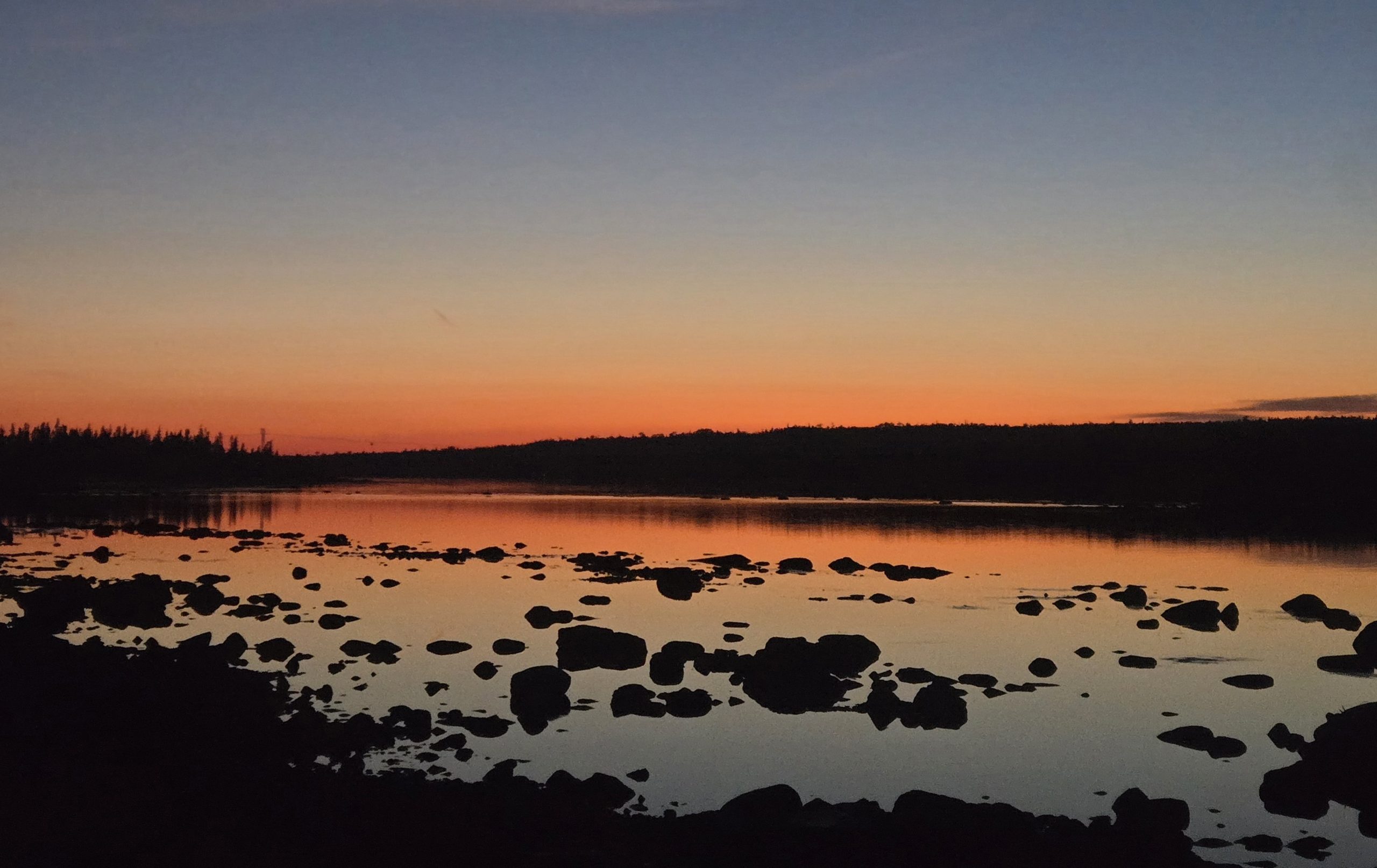
Subscribe & stay up-to-date with ASF

The last of the recreational Atlantic salmon angling seasons in Newfoundland and Labrador have closed for the year as of this week.
Kim Thompson, ASF’s Program Director for Newfoundland and Labrador was at home near Gros Morne National park, looking out at the ocean and hills full of red and yellow leaves. The fall is as beautiful as ever, but the rivers are low.
“I haven’t looked at the data, but I’m sure this may have been one of the hottest, driest seasons on record here for the island,” she said. “Who would have thought that we’d be finding ourselves on a tropical island in the middle of the Atlantic?”
Warm water, dry weather, and wildfires characterized this summer in the province. While the lack of rain in the forecast all summer is an obvious culprit for the low water this fall, Kim has an insight only a born-and-raised Newfoundlander would notice.
“People look at this and say, ‘we need water, we need rain.’ But we need snow,’” she said. “I’m out all the time, tromping through the woods with the dog, and I was amazed this winter at how dry it was. I only put on snowshoes once”
Even with an unusual amount of river closures this year, there were still lots of happy anglers throughout the season.
Kim said that it seemed as though the best angling was earlier in the year, in general.
“If they’re coming in early, maybe they know—I’m always amazed at how nature knows,” she said. “They know the temperatures are cold and there’s water at that time.”
Some rivers, like the Torrent River, recorded higher-than-normal returns. But word got out quickly.
“They’ve seen an enormous amount of anglers,” Kim said. “Anglers seem to go where the fish are.”
There is some preliminary data—from counting fences and fishways—that Kim shared with Rivernotes readers last week. It shows several rivers with higher returns this year than last year. So far, these numbers only count the fish as “adult salmon.” In the coming months, the data will be more closely examined, and we will know if there was a larger percentage of grilse returns this year, like we’ve been seeing in other regions. It would be very encouraging if this turns out to be an Atlantic-wide trend.
In this week’s Rivernotes, we have Kim’s submission about the end of the angling seasons, some comments about the Gander River, and some historic conservation news from the province.
In New Brunswick we have a report from the Miramichi Salmon Association’s Fredericton Dinner and Auction, and the recipients of this year’s Bud Bird Atlantic Salmon Scholarship. We also have a report from the Instream Habitat Restoration Workshop, a summary of summer work from the 2025 Jed Wright Fellow for River Health, and reports from the Kennebec and Androscoggin Rivers in Maine.
It has been an exciting week of recognition and progress for salmon conservation in New Brunswick. ASF’s New Brunswick Program Director David Roth writes:
“Earlier this week, several ASF staff had the pleasure of attending the Miramichi Salmon Association’s Fredericton Dinner and Auction, a wonderful evening celebrating the achievements and dedication of those committed to the future of Atlantic salmon.
A highlight of the evening was the recognition of two remarkable individuals, Norm Betts and Laura Gilks, for their outstanding leadership and lifelong dedication to salmon conservation. Norm’s decades of advocacy for sustainable salmon fisheries and Laura’s invaluable contributions to salmon management and conservation continue to leave a lasting impact across our region.
Another proud moment for the ASF community came with the presentation of the Bud Bird Atlantic Salmon Scholarship to ASF biologist Heather Perry, who conducts her graduate research under Dr. Tommi Linnansaari at the University of New Brunswick. Heather was recognized for her innovative work studying Atlantic salmon parr and their responses to heat events using radio telemetry. Her research is helping us better understand salmon resilience in a changing climate. Congratulations, Heather!”
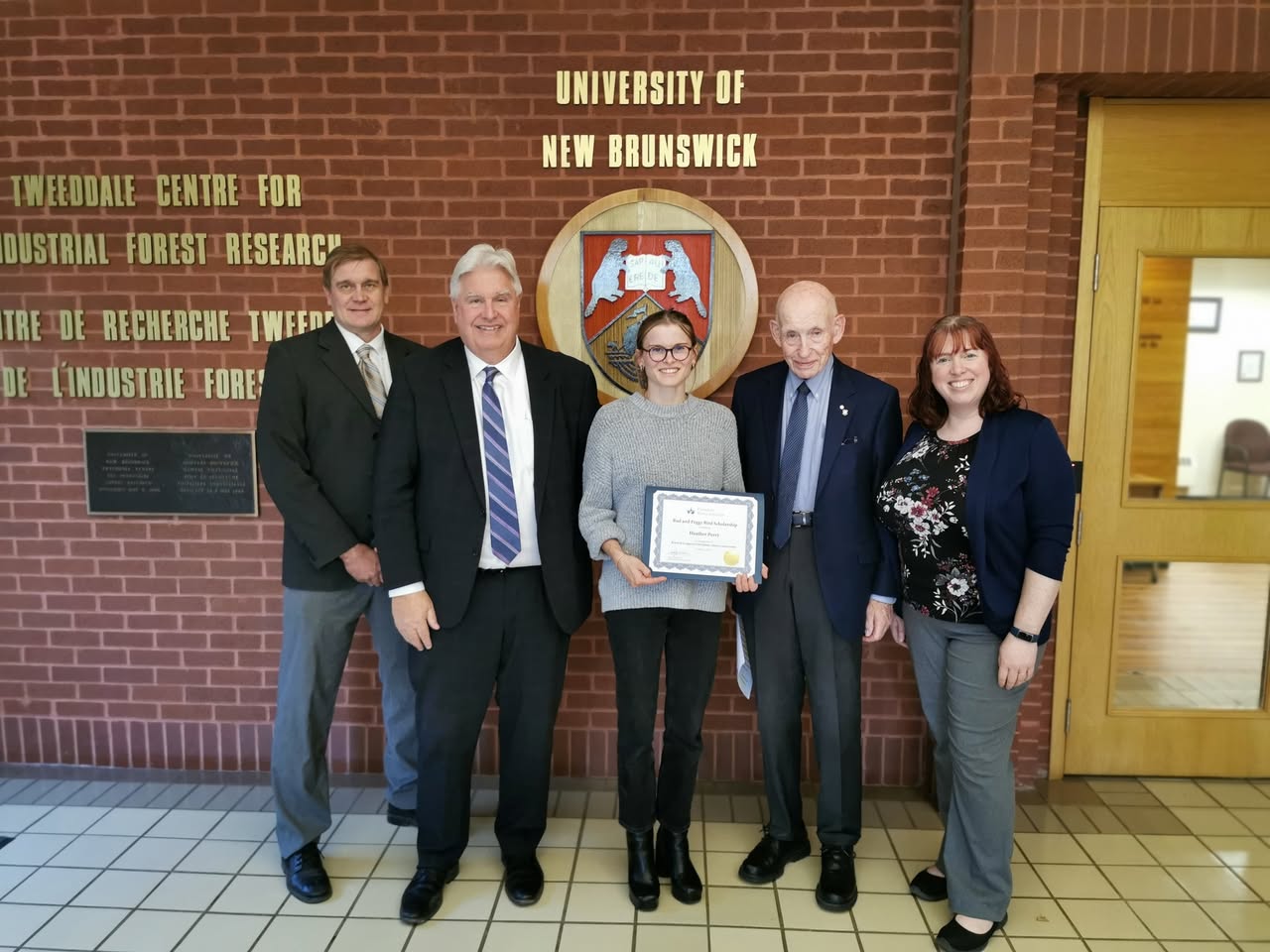
David continues:
“At the same event, the Bud Bird Award for Salmon Conservation was presented to Manley Price in recognition of his exceptional contributions to Atlantic salmon conservation. Over the years, Manley has been a tireless advocate, dedicating his time, energy, and expertise to restoring salmon habitat and protecting wild populations. This award celebrates his lifelong commitment and invaluable efforts to ensure a future for Atlantic salmon.
In the field, ASF’s New Brunswick Program Director welcomed representatives from Fisheries and Oceans Canada (DFO) to the Northwest Miramichi to showcase ASF’s PIT tag array system. The visit provided an excellent opportunity to discuss ongoing collaboration and explore new ways our organizations can work together to strengthen conservation efforts and protect wild Atlantic salmon across the province.”
As the recreational angling seasons end in Newfoundland and Labrador this week, ASF’s Program Director Kim Thompson writes:
“With a daytime air temperature high of 25°C reported in Gander on Tuesday, if it wasn’t for the changing color of the trees, it would be hard to believe that it’s the month of October, and the fall season. The changing of the season, despite the weather, does conclude the recreational NL salmon angling season for 2025 that is now officially closed with the last day for fall angling on the Humber, Exploits and Gander rivers closed as of October 7th.”
Gander Bay Indian Band Council Chief Calvin Francis noted that fall angling on the Gander River was poor due to low water levels and higher than normal water temperatures. Paul M. White also concludes the same with the following report:
“The fall fishery on the Gander River this year was not like previous years. The river was exceptionally low all of September from Gander Lake to Gander Bay and the fish were either not there or very reluctant to take. Some of the anglers I spoke with had some success, but it was tough fishing. Even though the water was cold, it was very low.”
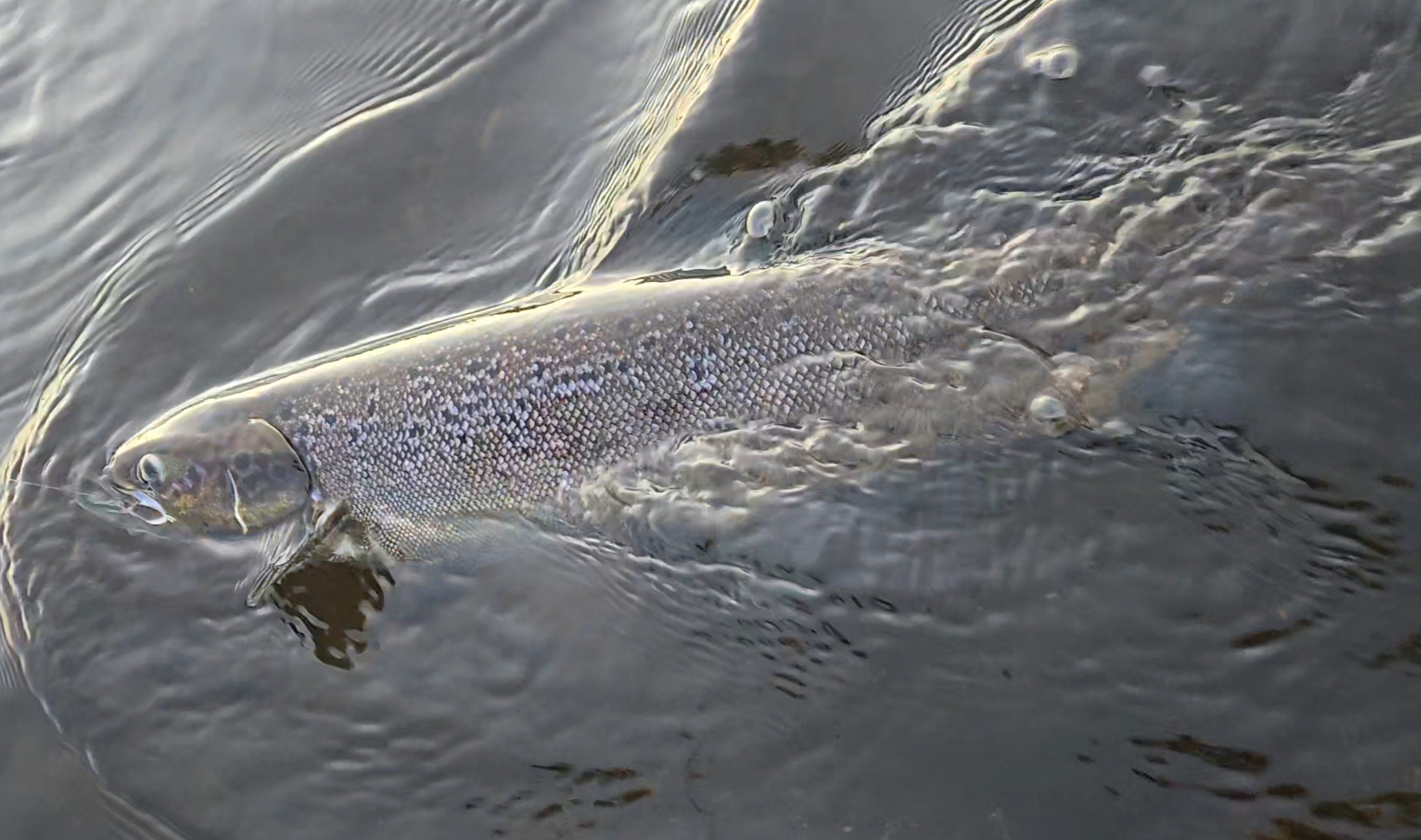
Kim also shares some historic conservation news in the province from the Nature Conservancy of Canada:
“Good news was announced by the Nature Conservatory of Canada (NCC) this week with a bold campaign to protect more than 1,800 hectares (4,400 acres) of boreal forest, freshwater shoreline and wetlands supporting the Gander Lake area. It is the largest land donation NCC has received during its 54-year history working in Atlantic Canada.
Domtar has agreed to donate land to NCC, thus allowing NCC to conserve four large parcels of forested lands and waters along the Southwest Gander River and Gander Lake near the communities of Glenwood and Appleton. The land donation project is significant as it enables better wildlife movement through connected conservation lands. Less than three per cent of the Central Newfoundland ecoregion currently falls under conservation status. This project could link two potential future conservation areas: the province’s proposed Rodney Pond Wilderness Reserve, and the Charlie’s Place protected area proposed by Qalipu First Nation. For more information visit Nature Conservancy of Canada launches largest private conservation securement in Newfoundland and Labrador | Nature Conservancy of Canada”
Last week, Cat Morse, ASF’s Habitat Restoration Project Manager, participated in the Instream Habitat Restoration Workshop hosted by Project SHARE & the US Forest Service. She writes:
“During the workshop, participants learned about the history of the Narraguagus River—an important salmon river in Downeast Maine—and how utilizing Lidar and fluvial geomorphology can help identify locations where the river was altered in the past.
The group went out into the field to see some of the work that Project SHARE has done in the watershed and to ground-truth features identified on Lidar maps, such as berms, straightened channels, borrow-pits, and old logging roads. Despite the drought in the region, they were able to find damp ground and pools in some of the cut-off channels, indicating that further restoration work could create better water storage and more habitat for juvenile salmon. ASF is a project partner on the Cherryfield Dam Removal Project, which will remove that last barrier to fish passage on the mainstem of the Narraguagus River.”
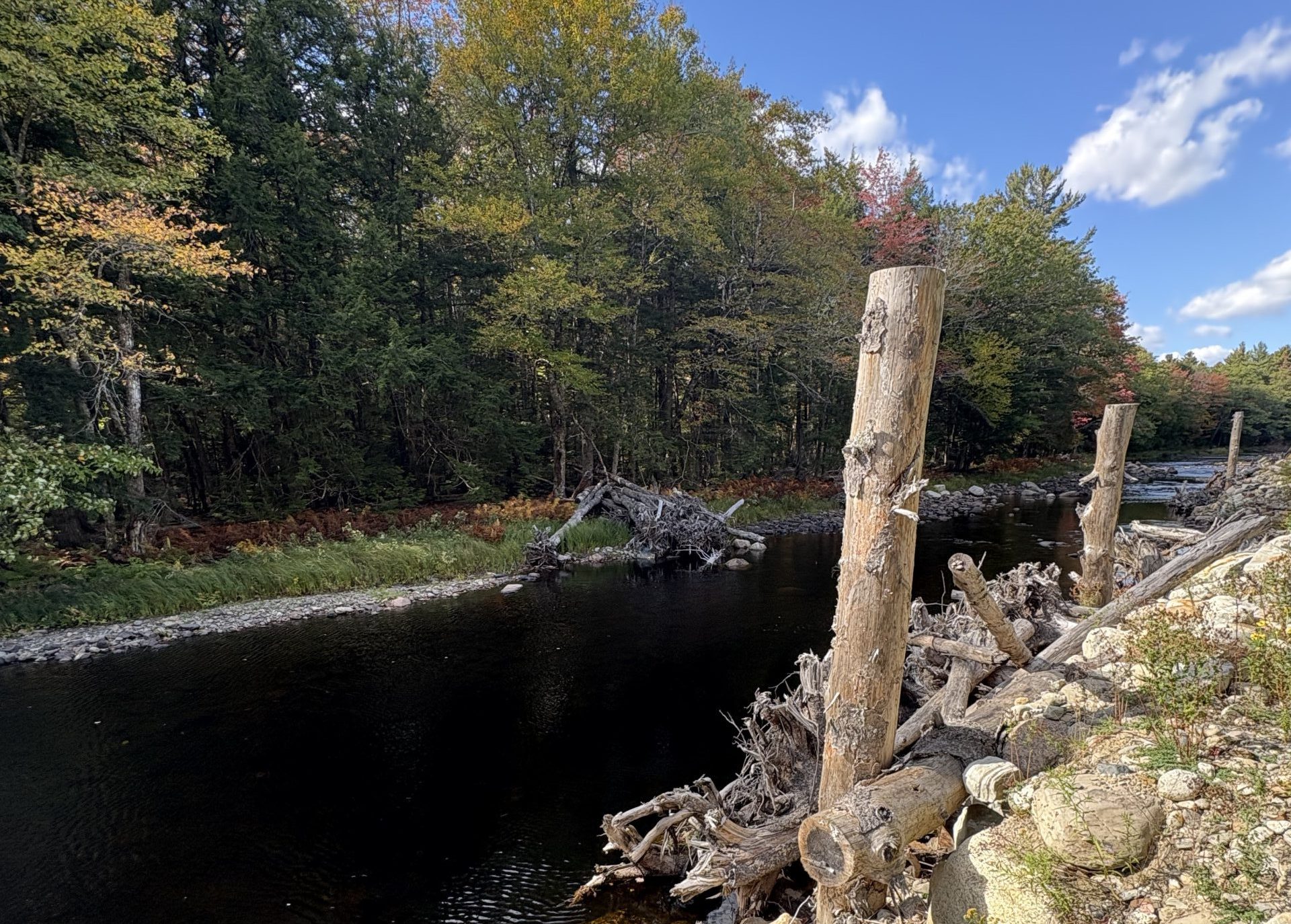
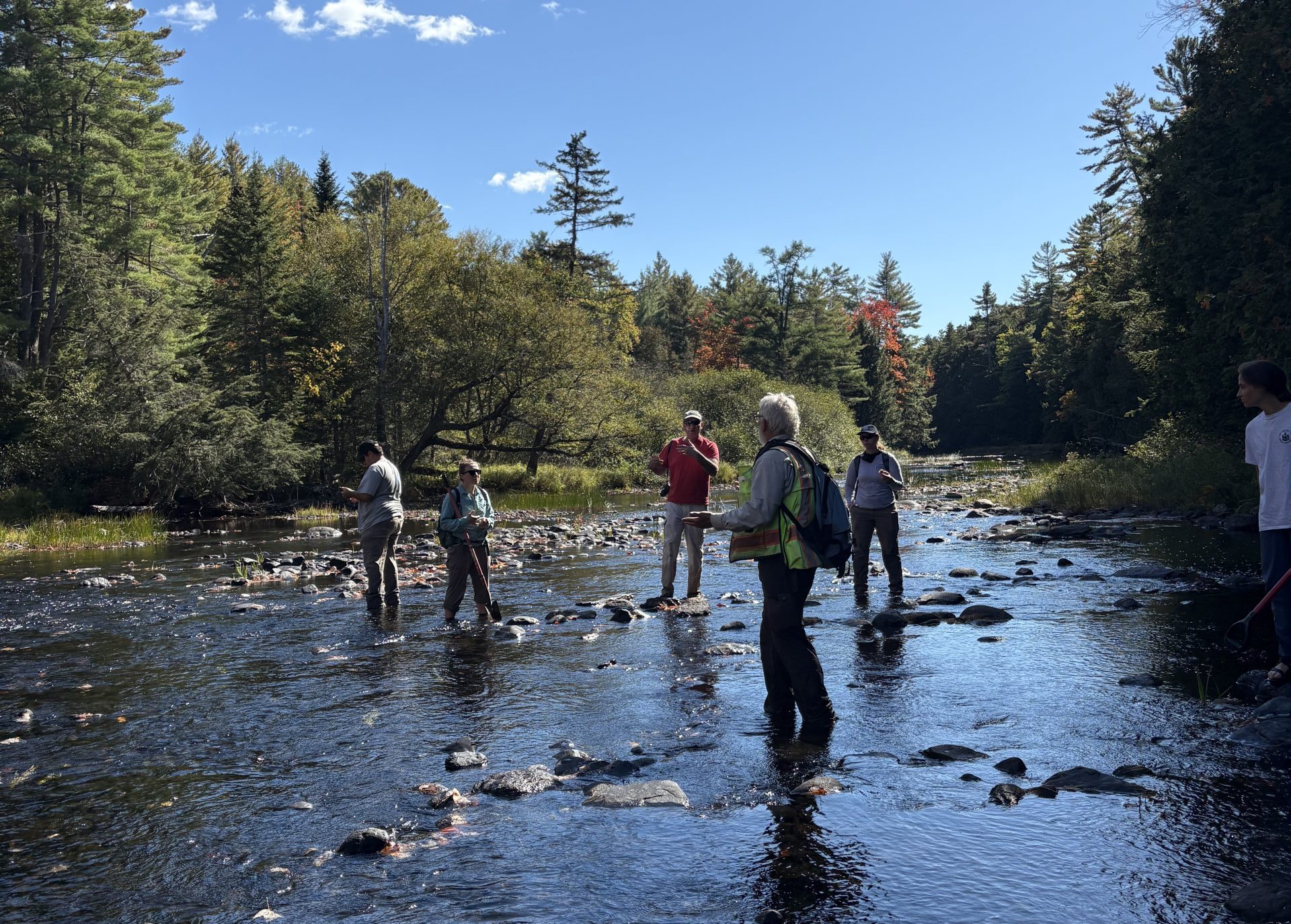
Our 2025 Jed Wright Fellow for River Health is Jefferson Hill, a recent graduate of Middlebury College in Vermont. Jefferson has been working with Project SHARE in the Downeast Maine salmon watersheds since spring. Here’s Jeff’s report on his work to date:
“In the beginning of the fellowship, I helped perform large wood surveys on the Narraguagus River and deployed temperature loggers in the Machias River watershed. We then conducted a ground-truthing survey of West Branch Brook, linking LiDAR analyses to remnant features from the log drives. One highlight of the summer was watching migratory fish such as sea lamprey, blueback herring, and alewife swim by our feet while surveying. We created longitudinal profiles of removed culverts and re-opened side channels to monitor geomorphic change following restoration projects. Working with SHARE has illuminated the importance of pairing research with action. The second half of the summer has involved active restoration through strategic large wood additions on the Narraguagus and Pleasant Rivers. While the work can be strenuous, I greatly appreciate the opportunity to give back to the systems I care so much about.
The second half of the Jed Wright Fellowship consisted primarily of strategic large wood treatments. On the mainstem of the Narraguagus, West Branch Brook, and the Pleasant River, we grip hoisted the majority of the trees to help with retention. On smaller tributaries such as Sinclair Brook, trees were felled, cut to size, then carefully configured into digger logs, key logs, spanners, and jams. While physically demanding, this work was fulfilling and exciting. Outside of wood additions, I helped collect temperature loggers from the Machias and Dennys rivers and electro-fished for broodstock in Narraguagus and Pleasant watersheds. Despite the scarily low water levels, we were able to collect the needed parr for the Craig Brook hatchery and perform site assessments within the mainstem and tributaries. After focusing on the research side of conservation work in school, it was very rewarding to take part in some of the action. I was impressed by Project SHARE’s commitment to watershed restoration and honored to work as the 2025 Jed Wright Fellow.”
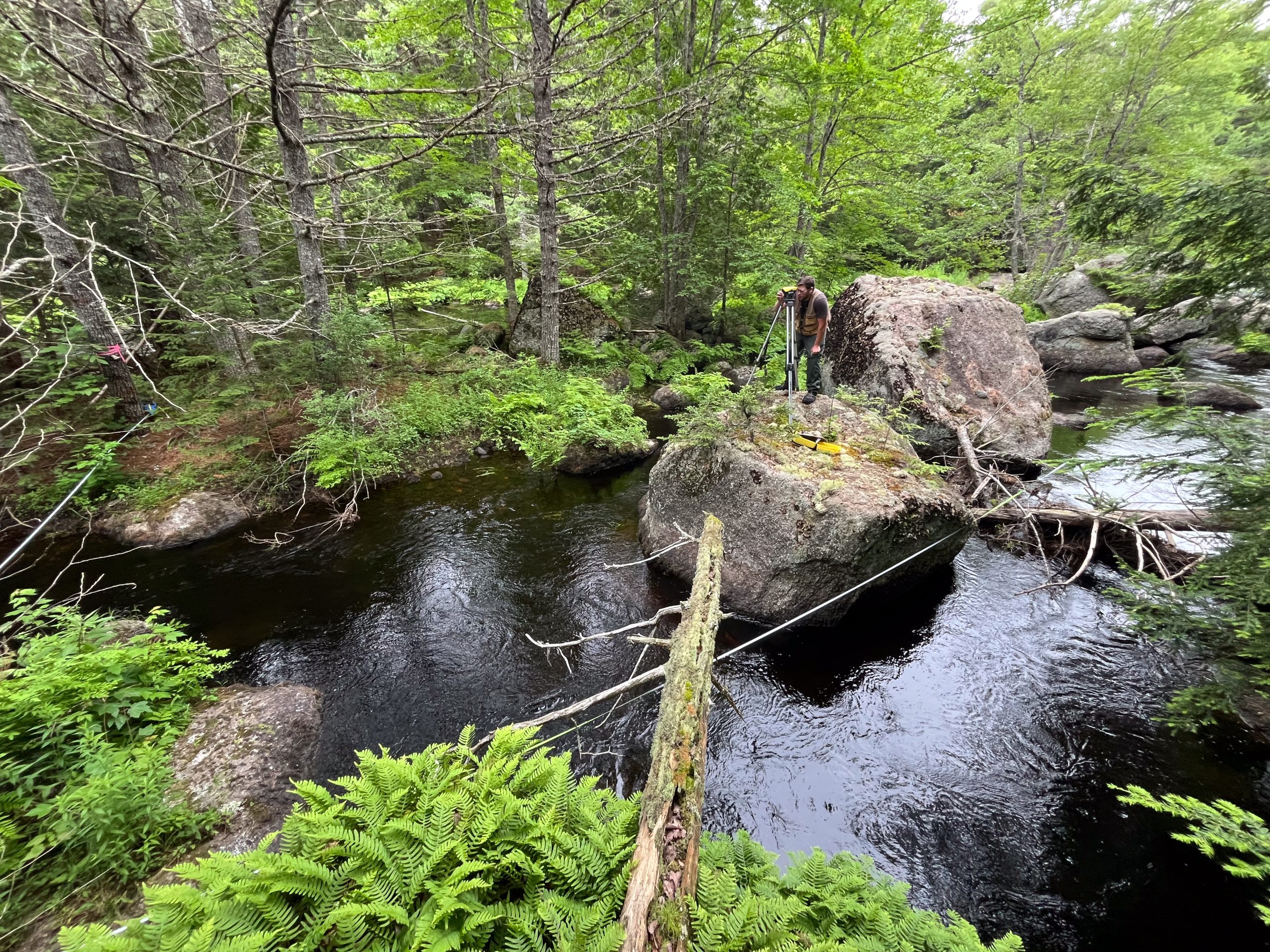
Jennifer Noll, a Marine Resource Scientist with the Maine Department of Marine Resources Bureau of Sea Run Fisheries and Habitat, has updates from the Kennebec and Androscoggin Rivers. She writes:
“Big news about the Kennebec River’s future hit the news on September 23, 2025. In a press release, the Nature Conservancy (TNC) announced that they reached a deal with Brookfield to purchase the lower 4 mainstem dams on the Kennebec River. The Nature Conservancy is planning to decommission the dams and return the river to free-flowing conditions. For the news release, please see: Kennebec River dams sale clears way for salmon to return and for more information on the project from TNC, see https://nature.org/kennebec.
The drought situation remains to be severe here in Maine; minimal rain has been received since the last report. The temperatures have been variable – some areas have gotten their first frosts of the season, yet some daily highs have still be in the mid-80’s (°F). The low discharge for the month dipped to 974 cfs and the high peaked at 3,360 cfs. Currently the river flow is at 1,840 cfs, which continues to fall out as the lowest discharge recorded at this site on this date (https://waterdata.usgs.gov, based on 39 years of data).
Lockwood fish lift, located in Waterville, ME at the first dam on the mainstem Kennebec River, opened on May 1st for the 2025 season. The trap has been operational the entire week. Fifty-nine new Atlantic salmon have been captured to date; the first two arrived on 5/30. We’ve had a few special appearances so far this year – one wild female 3 sea-winter (89cm) on 6/8 and one wild female long absence repeat spawner (84.5cm) on 6/11.
Brunswick fishway, located in Brunswick, ME on the mainstem Androscoggin River, was opened May 1st this year. Flow conditions have been somewhat steady (dry, dry, dry!) lower Androscoggin River as well, reaching a low of 1,130 cfs and a high of 2,200 cfs. Currently, the river flow is at 1,240 cfs, which falls between the minimum discharge level (610 cfs) and the 25th percentile discharge of 2,522 cfs (https://waterdata.usgs.gov, based on 96 years of data). The first Atlantic salmon at Brunswick in 2025 showed up on 6/13. In July, two salmon were reported to have passed Pejepscot fishway, the next fishway upstream, located approximately 15 kilometers away. One new salmon passed the Brunswick fishway on 9/26.”